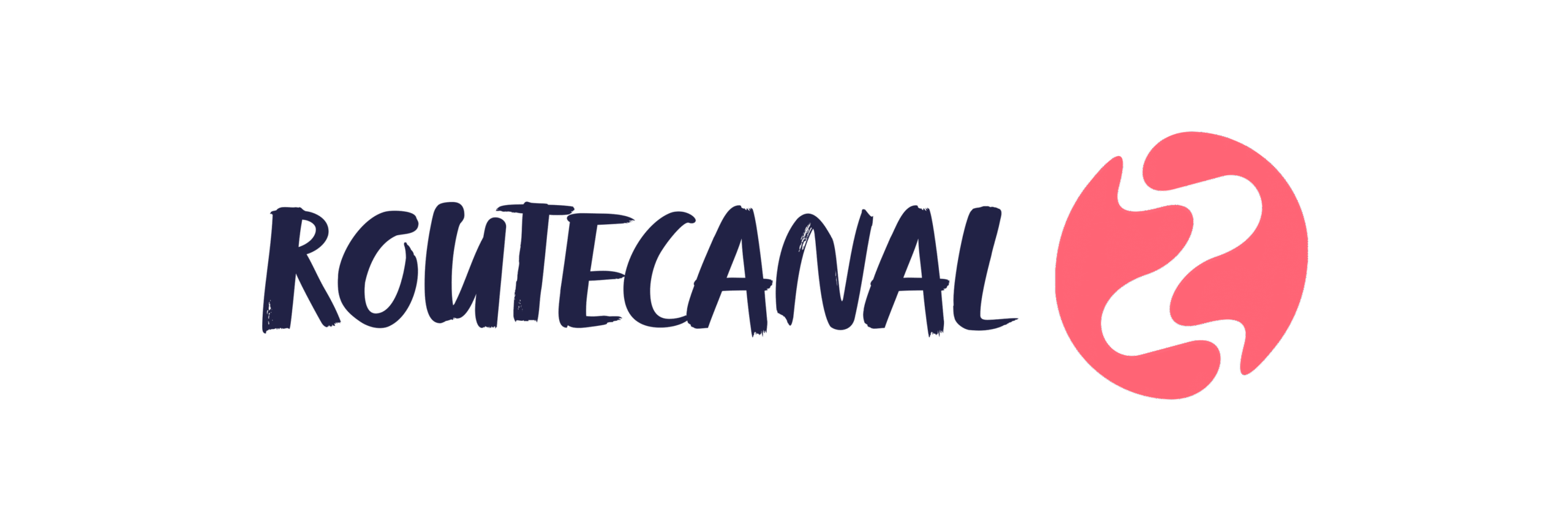
Ever find yourself elbow-deep in pancake batter, totally confused because your grandma’s recipe says “one cup,” but all you have is a tablespoon? (Been there. Spilled that.) Or maybe you’re following some viral TikTok brownie hack and suddenly need to convert everything from tablespoons to cups and back again—ugh, math brain freeze!
You’re not alone! Seriously, the whole “how many tbsp in a cup” thing throws off even the most confident home cooks. It can be the difference between cookies that are chef’s kiss or cookies that look like they survived an earthquake.
Don’t stress though. I’m about to break down everything you actually want to know about measuring cups versus tablespoons—no PhD required. We’ll chat about what these measurements even mean, how different countries love chaos with their own standards (lol), why getting this right really matters if you don’t wanna ruin dinner, and those sneaky mistakes everyone makes at least once (and never wants to admit).
Grab your apron, fam—it’s time to convert like a boss!
Understanding Cup And Tablespoon Measurements
So what do we even mean when we talk about “cups” and “tablespoons”? Here’s the scoop:
- Cups: These are usually used for bigger things—think flour for cookies or milk for mac ‘n cheese.
- Tablespoons (Tbsp): They’re for smaller stuff—like oil for salad dressing or cinnamon when you wanna make breakfast extra fancy.
But here comes the plot twist—not every country agrees on what counts as “a cup.” Yep, it’s like British vs American spelling wars… but messier.
| Region | Cup Size (ml) | Main Use Case |
|---|---|---|
| United States | 236 ml | Baking/cooking recipes |
| UK/Canada/Australia/NZ* | 250 ml* | Baking/cooking recipes (*AU/NZ use metric cup) |
Pro tip: If you found mom’s handwritten cookie recipe from her college days in Boston, go with the US measurement!
Let me tell ya—a friend once made banana bread using a UK measuring set while living in New York. The result? Banana pudding soup. Hilarious now… tragic then.
Basic Kitchen Measurements Explained
You don’t have to memorize every conversion ever (thank goodness), but knowing some basics will save your snack game.
Here are some essentials:
- A standard US cup = 16 tablespoons (Nope—not twelve, not twenty—exactly sixteen!)[3]
- If you’ve only got half a cup handy? That’s eight tablespoons.
- An individual tablespoon holds three teaspoons—that one always gets me mixed up during morning coffee rushes.
Now imagine needing just two tablespoons of olive oil and realizing you poured half a CUP by mistake…yikes! Don’t let measurement drama happen to your food.
Standard Cup Measurements In Different Regions
Most American cookbooks stick with good ol’ US cups (236 ml). But head over Down Under or visit family in London? Suddenly that same “cup” could be 250 ml—and that tiny difference adds up fast!
My advice: Double check which system your recipe uses before mixing things up—literally! Swapping between sets without thinking can leave your brownies sadder than Monday mornings.
What Exactly Is A Tablespoon?
This is where official measuring spoons come into play:
- A tablespoon (abbreviated as Tbsp) equals roughly 15 milliliters.
Real talk—I tried baking chocolate chip muffins using my roommate’s random big soup spoon once (“close enough!”) and ended up with dry little rocks instead of fluffy goodness.
If precision sounds boring, trust me: Nothing wrecks dessert faster than too much salt because someone guessed wrong on their measuring tools.
Common Conversion Mistakes To Avoid When Figuring Out How Many Tbsp In A Cup
- Mistake #1: Mixing up teaspoons vs tablespoons—they’re NOT interchangeable! Remember: One tablespoon = three teaspoons.
- Mistake #2: Forgetting regional differences; check if your recipe was written by an Aussie or American chef before dumping stuff together.
- Mistake #3: Eyeballing measurements instead of grabbing actual utensils—you wouldn’t wing it on Wordle guesses either!
- Mistake #4: Assuming liquid and dry measures work exactly alike; spoiler—they often don’t!
.
.
.
.
Staying mindful of these classic fails keeps kitchen chaos at bay AND guarantees brag-worthy eats every single time.
Quick Conversion Guide: Tablespoons to Cups
Ever found yourself staring at a recipe, totally confused, asking “How many tbsp in a cup again?” (Same.) If you’ve ever attempted grandma’s secret cookie recipe and ended up with something that looked like a Pinterest fail, you are not alone. Measuring wrong is basically the #1 reason cookies come out weirdly salty or way too dense—yikes! Whether you’re meal-prepping for the week or just craving some midnight pancakes, getting your conversions right is a real kitchen game-changer.
And hey, this isn’t just about baking. Precision matters everywhere—like when devs code calculators or data nerds analyze stats. Even one little slip-up with measurements can mess up everything from banana bread to spreadsheets.
The basic conversion formula
So, let’s break it down super simple: there are 16 tablespoons in 1 standard cup. This means if you want to go from tablespoons to cups, all you gotta do is divide by sixteen (Cups = Tablespoons ÷ 16). Or if your brain works the other way around (hi ADHD crew), multiply your number of cups by sixteen to get tablespoons (Tablespoons = Cups × 16). That’s literally it!
Example time: Let’s say your recipe calls for half a cup of olive oil but you can only find your tablespoon measure in the chaos that is your utensil drawer. Just remember: half a cup? That’s eight tablespoons. You’re welcome.
Bonus tip: Wondering how this connects outside food land? Programmers use these kinds of formulas all the time—one wrong line and boom, bug city. So yeah… tablespooning right is legit science.
Converting between US and metric measurements
Okay so here comes the curveball: Not every country uses “cup” and “tablespoon” exactly the same way. In America, one tablespoon = about 14.8 milliliters; but hop over to Australia or Britain and things change fast! They might call a tablespoon anywhere from 15 ml up to 20 ml depending on their standards.
If you’re following an international foodie on TikTok who keeps saying “just add two tablespoons,” check which country they’re cooking from before trusting those numbers blindly (trust us). Here’s what most folks deal with:
- US Cup: 240 ml / US Tbsp: ~14.8 ml
- Aussie/UK Cup: Can be slightly different!
- Tiny but mighty teaspoon? One tablespoon = three teaspoons no matter where you live.
When in doubt? Google for local conversions or look for digital scales that switch between units—total lifesaver for both chefs and software peeps running scripts worldwide.
Practical examples for everyday cooking
Here’s where it gets real (and honestly kinda fun): Imagine you’re whipping up pancakes but all your measuring cups disappeared because someone used them as bath toys last night (no judgment).
You scan your kitchen counter and spot one lone tablespoon—the hero we need! Turns out, almost any home cook can pull off magic with just this knowledge:
– Baking brownies? Recipe says one cup sugar? Measure out sixteen heaping spoonfuls instead!
– Sauce on deck? Half-cup tomato paste needed? Use eight scoops.
– No-fail rice ratio? Instead of one full cup water per serving, try sixteen tbsp per person—it actually works.
Want even more accuracy? Professional kitchens build entire systems around precise conversions like these; nobody wants a batch ruined by miscounted scoops (cue chef meltdown memes). Even coders building apps for recipe sites use conversion formulas so nobody has to panic mid-muffin-mix again.
Handy conversion chart for quick reference
| Tablespoons (Tbsp) | Cups (US) |
| 1 Tbsp | 0.0625 cups |
| 4 Tbsp | 0.25 cups (aka ¼ cup!) |
| 8 Tbsp | 0.5 cups (½ cup) |
| 12 Tbsp | 0.75 cups (¾ cup) |
| 16 Tbsp | 1 full cup 🎉 |
If only every math problem was this satisfying! Screenshot or print this chart—tape it inside a cabinet door like every Gen Z-er obsessed with cottagecore kitchens.
No matter if you’re perfecting mom’s chili or coding an app feature for food bloggers worldwide—the answer to “how many tbsp in a cup?” is always gonna have your back.
(Now go impress everyone at brunch when someone asks—they’ll think you’re basically Ina Garten meets The Matrix.) 🙌🍳✨
Using the right measuring tools for how many tbsp in a cup
Ever wondered why your cookies turn out wildly different each time, even when you swear you follow the recipe? (Yeah, same.) It usually comes down to using the wrong measuring tools.
If you want to nail “how many tbsp in a cup” and finally have brownies that don’t resemble bricks, start here.
- Dry measuring cups: These are made for flour, sugar, or cocoa powder. Fill it to the top, then level off with a straight edge—no packing it down unless your recipe says so.
- Liquid measuring cups: Pour liquids like milk or oil in these bad boys. They’ve got that little spout and space at the top so nothing sloshes over.
- Spoons matter: Grab standard tablespoon and teaspoon sets—not whatever giant spoon came with your cereal box. Precision is what makes grandma’s banana bread taste like…well, grandma’s.
Don’t mess around: trust your gear if you want consistent results. Using actual measuring tools is like showing up with cheat codes to flavor town.
Digital vs. analog measuring tools: which gives better answers for how many tbsp in a cup?
Okay, let’s get real: digital scales look futuristic and cool, but do they really make life easier when figuring out how many tablespoons are in a cup?
Analog folks love that tactile “scoop-and-level” action—they’ll defend their trusty plastic cups till the end of time.
But digital scales? Pure accuracy vibes.
I swapped my battered old spoons for a scale last year after another pancake disaster (don’t ask).
Suddenly? My recipes stopped being wild science experiments and became repeatable wins.
Here’s the vibe check:
Digital: Game changer for sticky or clumpy stuff—especially butter or nut butter where leveling off gets messy. Plus, conversions between grams/ounces/tablespoons/cups are just one button away.
If consistency matters more than nostalgia, try digital—even if grandma glares at you from across the room.
How to measure sticky ingredients without losing your mind (or half your peanut butter)
You ever try scraping honey out of a tablespoon only to lose most of it on your finger? Sticky ingredients can seriously sabotage anyone trying to learn exactly how many tbsp in a cup—or just make cookies less sweet because half the maple syrup never makes it into the bowl.
Here’s my go-to hack list:
– Spray or rub a tiny bit of oil inside your measuring spoon before scooping sticky stuff like honey or molasses.
– Use silicone spatulas—they’re magical at scraping every last drop out.
– For things like peanut butter: use two spoons—one for scooping into your measurement tool and another for getting it out cleanly.
Simple tweaks = maximum flavor payoff every single time.
When weight beats volume: knowing when not to care about how many tbsp in a cup
I learned this lesson after turning pancakes into glue by misjudging flour volume one too many times. Here’s where tossing those volumetric measurements aside saves dinner:
For baking especially—think breads, cakes, cookies—the pro move is weighing dry ingredients instead of trying to remember how many tablespoons fit inside one cup.
Why?
A packed scoop vs. loosely filled one can change everything.
Weighing takes out guesswork entirely.
You’ll see bakers everywhere ditching cups/spoons for scales because precision means no more kitchen fails—or having pancakes stick to your roof forever.
So next time someone asks “how many tbsp in a cup?” know this: sometimes ounces/grams rule harder than any conversion chart ever could!
The ultimate kitchen measurement hacks even pros secretly use
I live for lazy shortcuts that actually work—and some tricks will blow your mind whether you’re dealing with “how many tbsp in a cup” math or just trying not to cry over spilled sauce again.
Buckle up for these smart swaps:
- If you lost part of your set? One tablespoon equals three teaspoons! Mind-blown yet?
- No liquid measure handy? Four tablespoons make up a quarter-cup—it’s clutch when mixing small batch dressings.
- Pint glasses aren’t just for beer—two cups equal one pint if you need bigger measures fast!
- Crumple parchment paper under water then wring it before lining pans—it sticks way better (bonus tip but SO worth sharing).
- If all else fails…ask Google Home/Siri/Alexa mid-recipe panic attack (“Hey Siri! How many tbsp in a cup?”) No shame; I do it weekly.
The no-stress common ingredient conversion guide—including how many tbsp in a cup math everyone forgets
| Ingredient Conversion | Equivalent Amounts |
|---|---|
| Cups ↔ Tablespoons | 1 Cup = 16 Tbsp 0.5 Cup = 8 Tbsp 0.75 Cup = 12 Tbsp |
| Spoons ↔ Teaspoons | 1 Tbsp = 3 Tsp 1 Fl Oz = 2 Tbsp |
| Larger Volumes | 2 Cups = 1 Pint 4 Cups = 1 Quart 16 Cups = 1 Gallon |
No need to memorize everything—just screenshot this chart next time confusion hits halfway through baking night!
Nail professional-level results with these expert tips on how many tbsp in a cup conversions
I once watched an actual pastry chef plow through her prep list—all she did was weigh stuff out with zero drama while I kept second guessing myself pouring flour back and forth between random mugs.
Her secret wasn’t magic; she just stuck with core rules:
- Spoon dry ingredients lightly into their cups then sweep flat—never pack them down unless told otherwise.
- Add wet ingredients at eye level—you’d be shocked how much overpour happens leaning sideways on tippy toes.
- If converting recipes from online sources using unfamiliar measurements (I’m looking at you UK metric system), double check charts against US standards—“how many tbsp in a cup”, “teaspoon vs dessert spoon”, all those sneaky differences add up big-time.
If possible? Weigh everything for bulletproof consistency—that’s why pro kitchens love their scales more than anything.
And always keep backup batteries around…because digital scales dying mid-bake isn’t cute.
In short:
Whether it’s nailing chocolate chip cookie dough texture or leveling up meal-prep game,
Knowing “how many tbsp in a cup” isn’t trivia—it’s legit survival knowledge.
Get comfy swapping between spoons/cups/weights whenever needed…and watch average meals become epic wins.
Now go crush that recipe!







